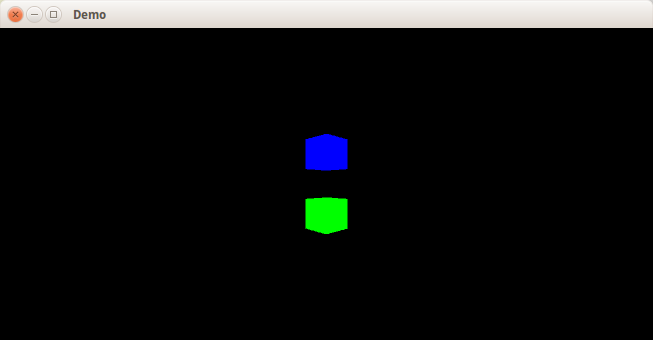1
2
3
4
5
6
7
8
9
10
11
12
13
14
15
16
17
18
19
20
21
22
23
24
25
26
27
28
29
30
31
32
33
34
35
36
37
38
39
40
41
42
43
44
45
46
47
48
49
50
51
52
53
54
55
56
57
58
59
60
61
62
63
64
65
66
67
68
69
70
71
72
73
74
75
76
77
78
79
80
81
82
83
84
85
86
87
88
89
90
91
92
93
94
95
96
97
98
99
100
101
102
103
104
105
106
107
108
109
110
111
112
113
114
115
116
117
118
119
120
121
122
123
124
125
126
127
128
129
130
131
132
133
134
135
136
137
138
139
140
141
142
143
144
145
146
147
148
149
150
151
152
153
154
155
156
157
158
159
160
161
162
163
164
165
166
167
168
169
170
171
172
173
174
175
176
177
178
179
180
181
182
183
184
185
186
187
188
189
190
191
192 |
import os
import sys
from kivy.app import App
from kivy.clock import Clock
from kivy.core.window import Window
from kivy.core.image import Image
from kivy.uix.widget import Widget
from kivy.resources import resource_find
from kivy.graphics.transformation import Matrix
from kivy.graphics.opengl import *
from kivy.graphics import *
from kivy.uix.widget import Widget
from kivy.graphics import Color, Ellipse
from numpy import array
#store a single vertex in this class
class point:
def __init__(self, p, c=(1, 0, 0, 1)):
self.x, self.y, self.z = p
self.vertex = array([self.x, self.y, self.z, c[0], c[1], c[2], c[3]], 'f')
#simple class to create the vertices for a cube for testing.
class cube:
def __init__(self, p1, color=(1, 0, 0, 1), size=0.5):
self.color = array([1, 0, 0, 1], 'f')
self.points = (
point((p1[0] - size, p1[1] + size, p1[2] - size), (color)),
point((p1[0] - size, p1[1] + size, p1[2] + size), (color)),
point((p1[0] + size, p1[1] + size, p1[2] + size), (color)),
point((p1[0] + size, p1[1] + size, p1[2] - size), (color)),
point((p1[0] - size, p1[1] - size, p1[2] - size), (color)),
point((p1[0] - size, p1[1] - size, p1[2] + size), (color)),
point((p1[0] + size, p1[1] - size, p1[2] + size), (color)),
point((p1[0] + size, p1[1] - size, p1[2] - size), (color)),
)
def get_data(self):
return (
self.points[0].vertex, self.points[2].vertex, self.points[1].vertex,
self.points[0].vertex, self.points[3].vertex, self.points[2].vertex,
self.points[0].vertex, self.points[1].vertex, self.points[5].vertex,
self.points[0].vertex, self.points[5].vertex, self.points[4].vertex,
self.points[0].vertex, self.points[7].vertex, self.points[3].vertex,
self.points[0].vertex, self.points[4].vertex, self.points[7].vertex,
self.points[6].vertex, self.points[2].vertex, self.points[3].vertex,
self.points[6].vertex, self.points[3].vertex, self.points[7].vertex,
self.points[6].vertex, self.points[1].vertex, self.points[2].vertex,
self.points[6].vertex, self.points[5].vertex, self.points[1].vertex,
self.points[6].vertex, self.points[4].vertex, self.points[5].vertex,
self.points[6].vertex, self.points[7].vertex, self.points[4].vertex,
)
#custom widget for render our scene into
class OpenglWidget(Widget):
def __init__(self, **kwargs):
self.instructions = InstructionGroup()
self.canvas = RenderContext(compute_normal_mat=True)
self.canvas.shader.source = resource_find('kivy.glsl')
#create first shader for cube 1
self.cube1 = RenderContext(compute_normal_mat=True)
self.cube1.shader.source = resource_find('kivy-blue.glsl')
#create first shader for cube 2
self.cube2 = RenderContext(compute_normal_mat=True)
self.cube2.shader.source = resource_find('kivy-green.glsl')
#create 2 cubes for testing
cube1 = cube((0, -4, 0), size = 2.0)
cube2 = cube((0, 4, 0), size = 2.0)
#generate vertex array for cube 1
self.vertices_cube1 = []
for item in cube1.get_data():
for a in item:
self.vertices_cube1.append(a)
#generate vertex array for cube 2
self.vertices_cube2 = []
for item in cube2.get_data():
for a in item:
self.vertices_cube2.append(a)
#calcualte indices for both cubes
self.indices_cube1 = range(0, 36)
self.indices_cube2 = range(0, 36)
#add our render contexts to an instruction group for drawing
self.instructions.add(self.cube1)
self.instructions.add(self.cube2)
self.canvas.add(self.instructions)
with self.canvas:
self.cb = Callback(self.setup_gl_context)
PushMatrix()
self.scene()
PopMatrix()
self.cb = Callback(self.reset_gl_context)
Clock.schedule_interval(self.update_glsl, 1 / 60.)
#create our scene and update our two models
def scene(self):
Color(0, 0, 0, 1)
with self.cube2:
self.cube1_mesh()
with self.cube1:
self.cube2_mesh()
def setup_gl_context(self, *args):
glEnable(GL_DEPTH_TEST)
def reset_gl_context(self, *args):
glDisable(GL_DEPTH_TEST)
#setup the projection matrices
def update_glsl(self, *largs):
aspect = float(self.width) / float(self.height)
projection_mat = Matrix()
projection_mat.perspective(45.0, aspect, 1.0, 80.0)
model = Matrix().look_at(
0.0, 0.0, 25.0,
0.0, 0.0, 0.0,
0.0, 1.0, 0.0)
self.canvas['projection_mat'] = projection_mat
self.canvas['modelview_mat'] = model
self.cube1['projection_mat'] = projection_mat
self.cube1['modelview_mat'] = model
self.cube2['projection_mat'] = projection_mat
self.cube2['modelview_mat'] = model
self.rot_cube1.angle += 1
self.rot_cube2.angle += 1
def cube1_mesh(self):
Color(0, 0, 0, 1)
PushMatrix()
self.rot_cube1 = Rotate(1, 0, 1, 0)
vertex_format = [
('v_pos', 3, 'float'),
('v_color', 4, 'float'),
]
UpdateNormalMatrix()
self.mesh1 = Mesh(
vertices=self.vertices_cube1,
indices=self.indices_cube1,
fmt=vertex_format,
mode='triangles',
)
PopMatrix()
def cube2_mesh(self):
PushMatrix()
Color(0, 0, 0, 1)
self.rot_cube2 = Rotate(1, 0, -1, 0)
vertex_format = [
('v_pos', 3, 'float'),
('v_color', 4, 'float'),
]
UpdateNormalMatrix()
self.mesh2 = Mesh(
vertices=self.vertices_cube2,
indices=self.indices_cube2,
fmt=vertex_format,
mode='triangles',
)
PopMatrix()
def setup_scene(self):
Color(0, 0, 0, 1)
self.cube1_mesh()
self.cube1_mesh()
|
